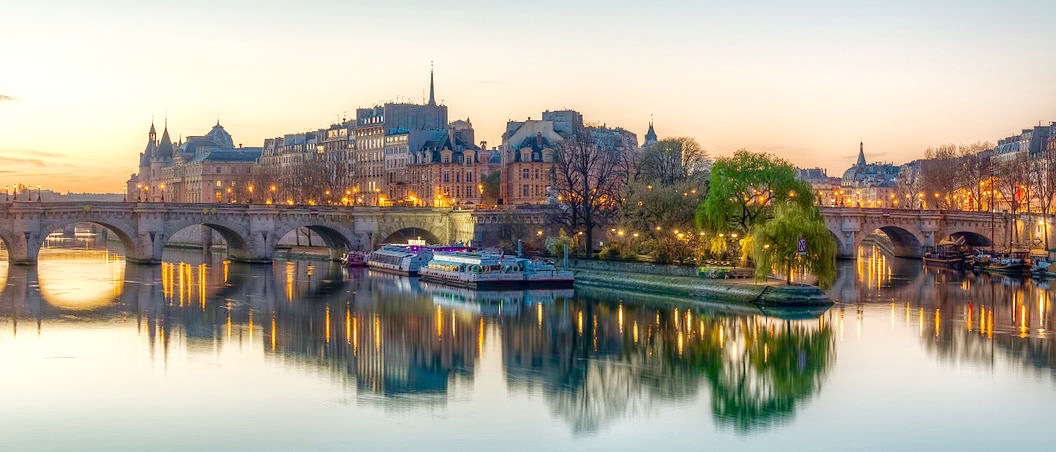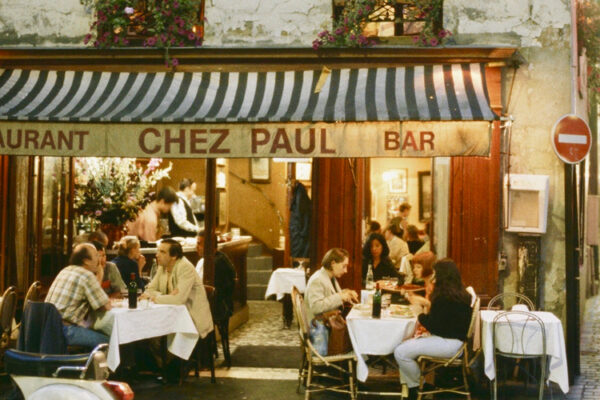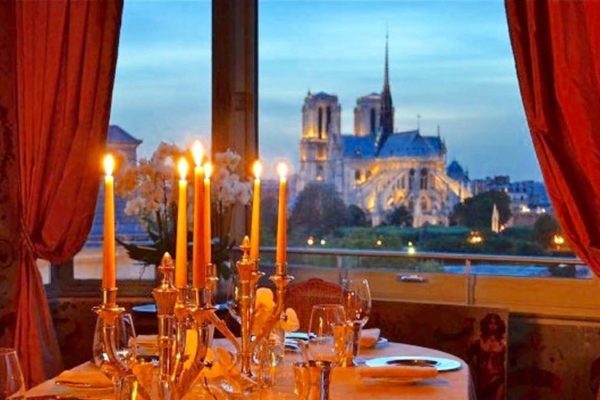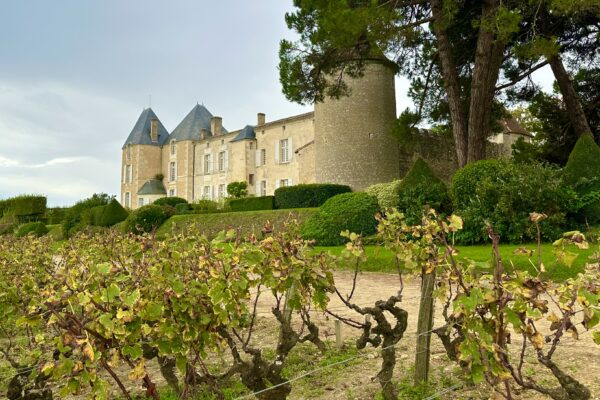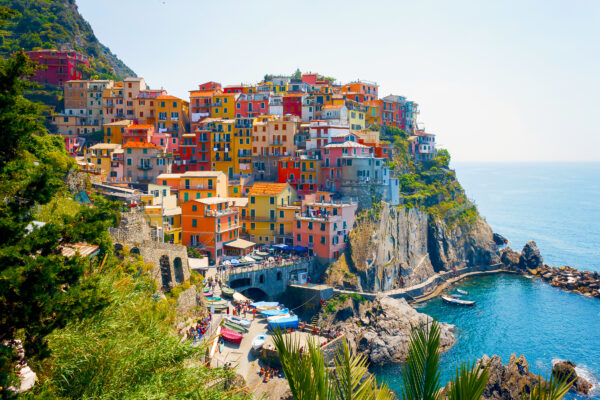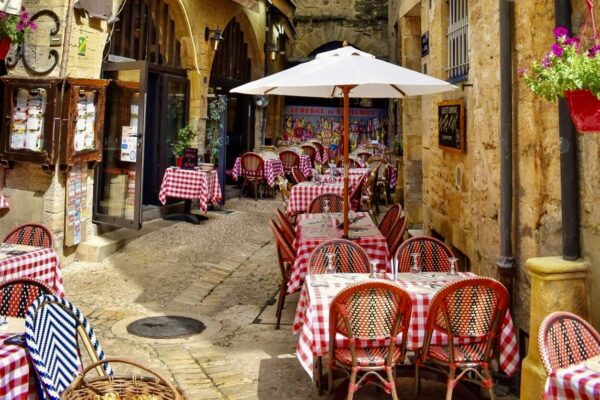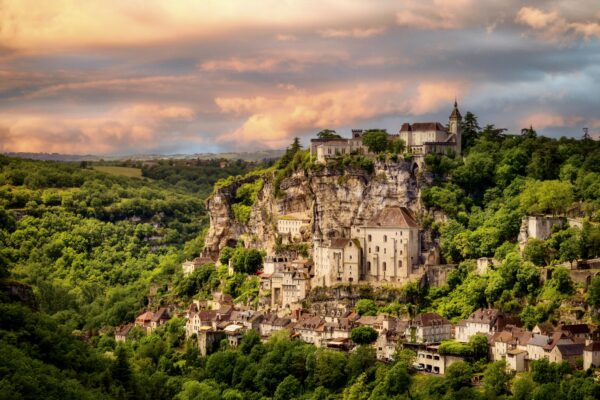Île de la Cité: Where Paris Begins
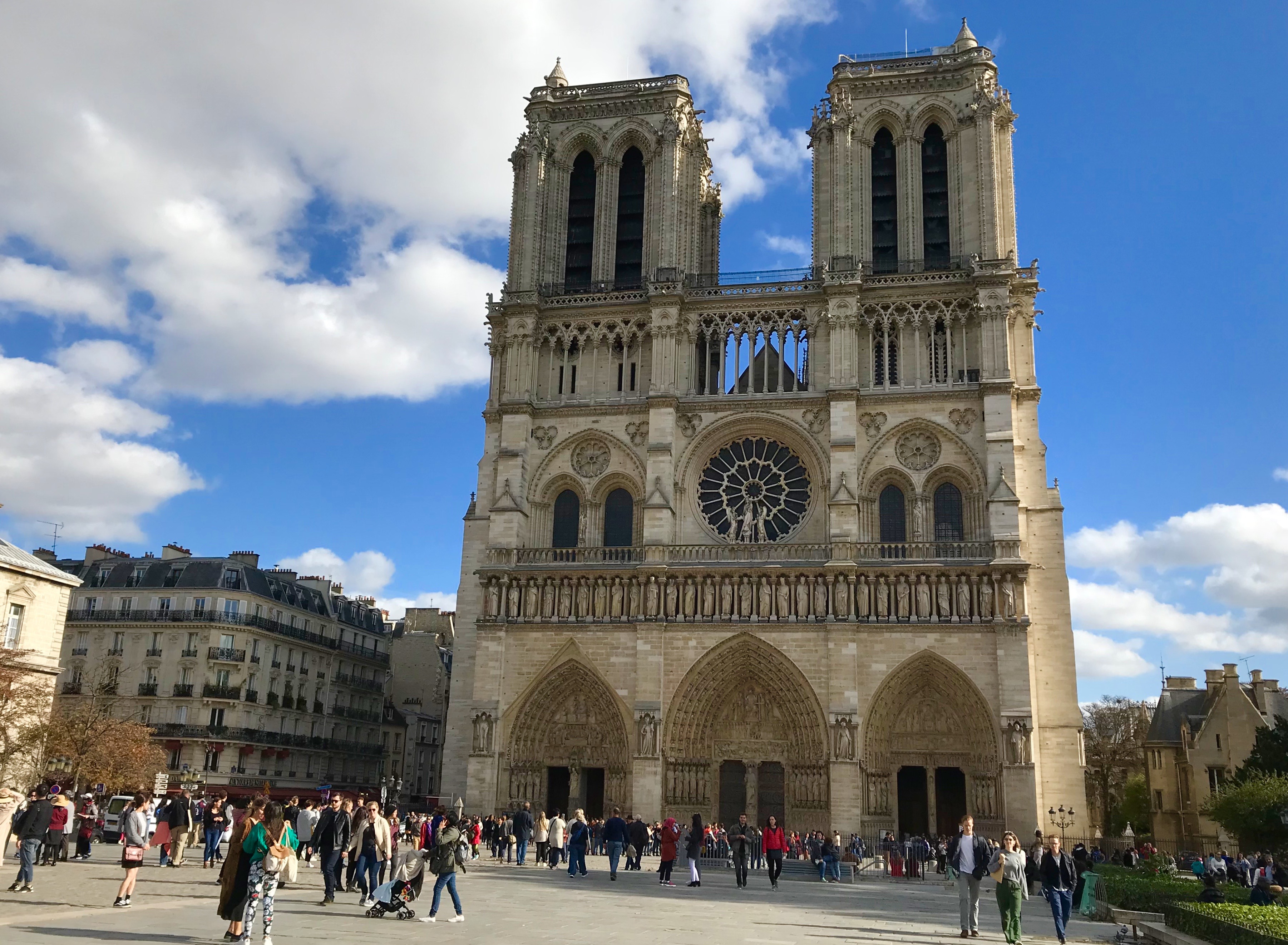
Text & Photos by Marla Norman, Publisher
Paris is filled with legendary sites and landmarks, but if you really want to know the city’s story from the beginning, go to Île de la Cité. The tiny island has been occupied for centuries. Its earliest inhabitants were a Celtic tribe known, significantly, as the Parisi.
After Julius Caesar conquered the region, the island was re-settled by the Romans. Centuries later, palaces and cathedrals were built, including the magnificent Notre-Dame — a site considered so historically symbolic, that the distance from all points in France are measured from there.
We have an expert to guide us, as we explore the island: Violette Andre, an art historian who works with the tour company Walks of France. We were fortunate to tour the Louvre with Violette as well. (See our Musée du Louvre excursion here.)
NOTRE-DAME DE PARIS
We begin our tour at Place du Parvis and the Point Zéro des Routes de France – a brass disc marks the official measuring place. A few yards from Point Zéro is the main entrance to Notre-Dame. We stand for a few minutes admiring the ornate doors, which seem like hands joined in prayer.
Violette points out the three entrances: Portal of the Last Judgment, at the center and Portal of Saint Anne on the right. The left portal is dedicated to the Virgin Mary and here too we find the patron saint of Paris, Saint Denis, beheaded unfortunately.
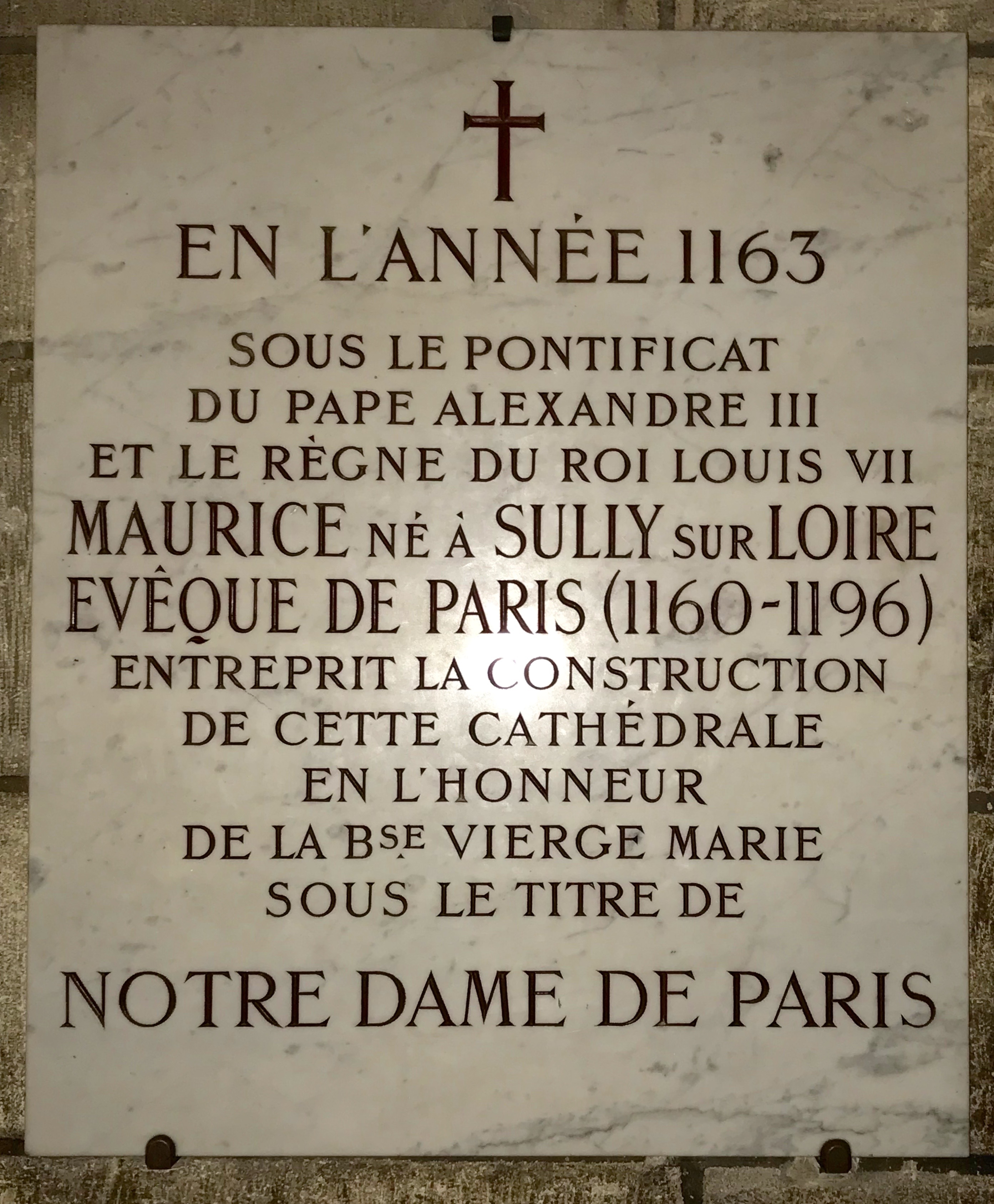 It’s incredibly quiet as we first enter the church. Early morning, before other tourists arrive is the best time for viewing. We can easily see the interiors and imagine the space as it must have been centuries ago. Violette leads us to a plaque on the wall marking the date — 1163 — when the cathedral was officially completed and consecrated by Pope Alexander III, with King Louis VII in attendance.
It’s incredibly quiet as we first enter the church. Early morning, before other tourists arrive is the best time for viewing. We can easily see the interiors and imagine the space as it must have been centuries ago. Violette leads us to a plaque on the wall marking the date — 1163 — when the cathedral was officially completed and consecrated by Pope Alexander III, with King Louis VII in attendance.
The enormous organ towers over us as we walk down the main aisle. The instrument has 7,952 pipes and although it has been modernized and even computerized at this point, the original pipework dates back to the 18th century.
We view the beautifully-rendered 12th century statue of Notre Dame de Paris (Our Lady of Paris) the Cathedral’s namesake. Other well-known statues include a Pietà and a homage to Joan of Arc. Massive depictions of the life of Christ are sculpted on the north and south walls of the choir.
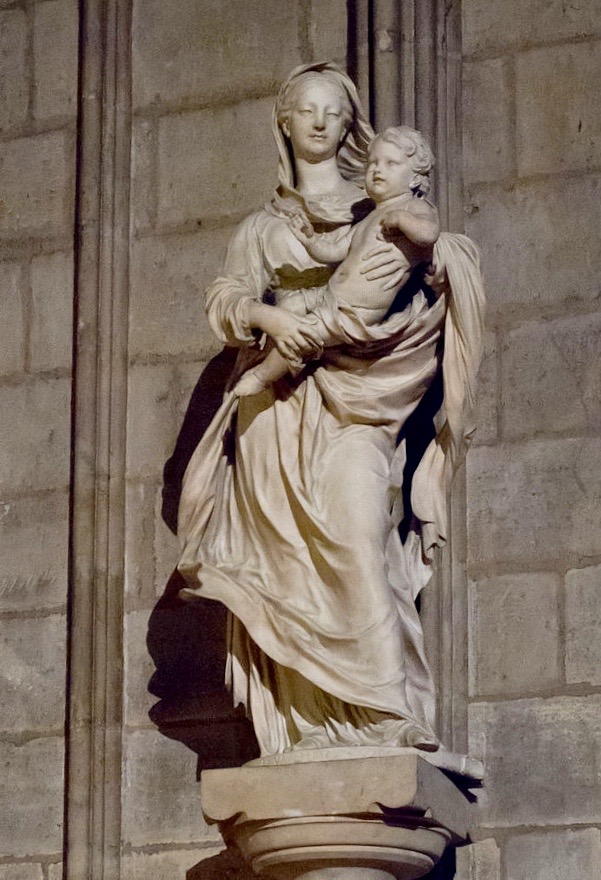
Notre Dame de Paris (Our Lady of Paris)
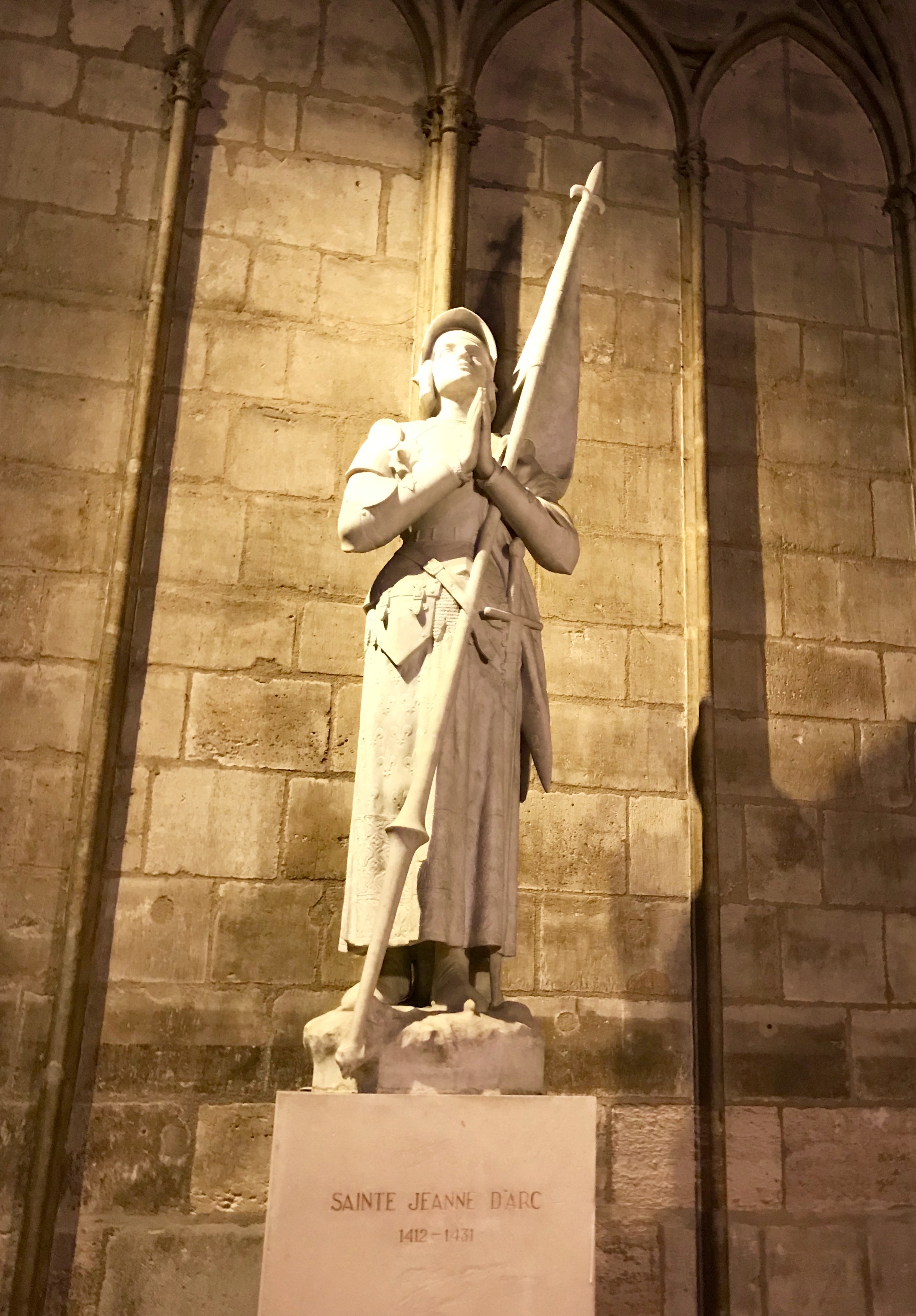
Joan of Arc. Photos by Marla Norman.
The spectacular Rose Window on the north wall is especially luminous in the morning. Violette reminds us that the church was heavily damaged during the French Revolution. Statues were beheaded and ripped out. The spire was torn down, leaving the roof open and badly leaking. At one point, the church was used as a warehouse. Miraculously, the stained glass windows were never harmed.
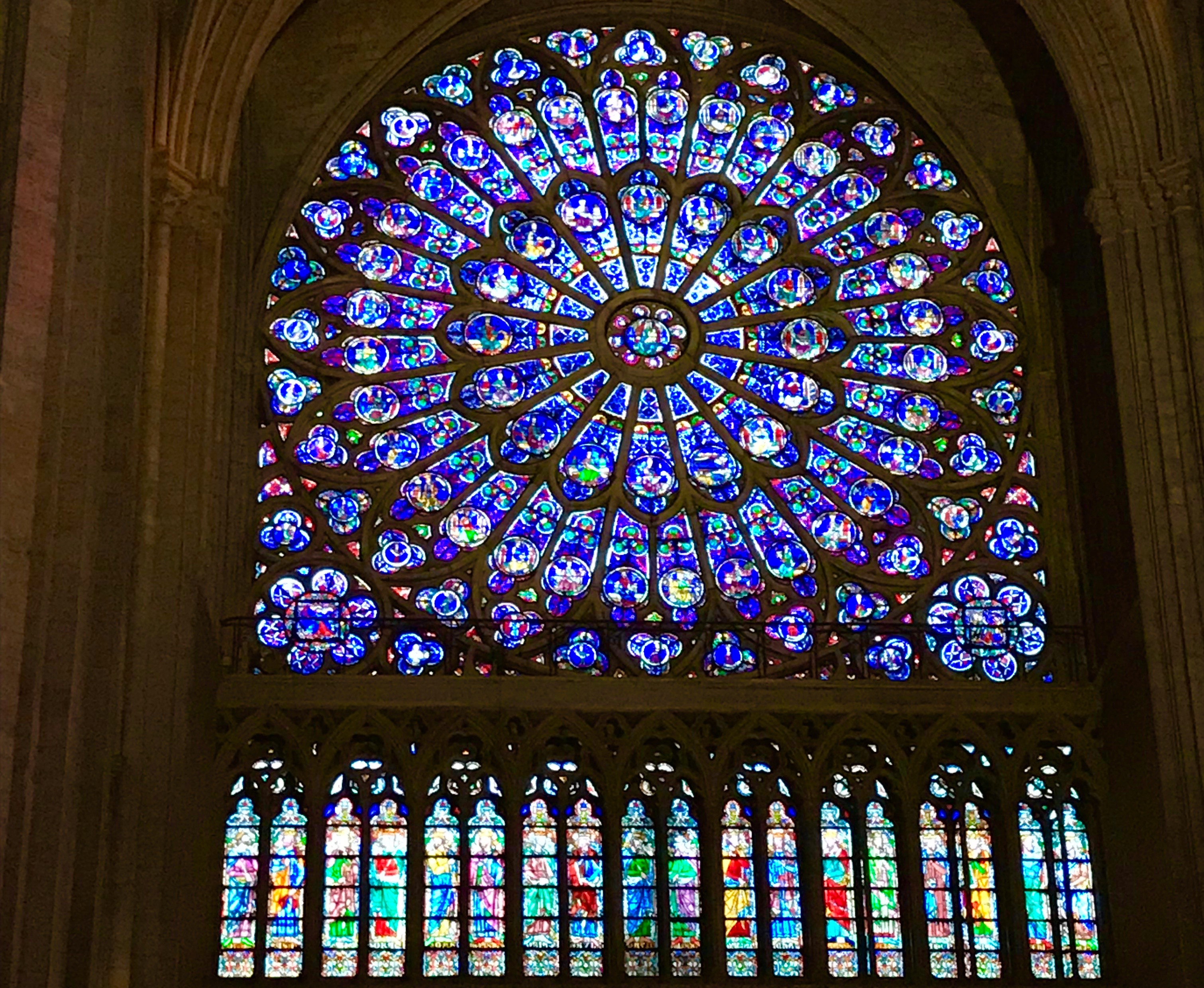
North Rose Window at Notre-Dame. Photo by Marla Norman
In 1831, Victor Hugo published The Hunchback of Notre-Dame, in the hope that his novel would draw attention to the neglected, crumbling Cathedral. It worked. Both the book and Hugo’s attempt to spur on renovations were successful. Reconstruction began in 1845 and lasted over twenty-five years. Renowned architect Eugène Emmanuel Viollet-le-Duc, also a designer for the Statue of Liberty, was hired for the project. Viollet-le-Duc rebuilt the iconic spire that now crowns the church and also created the famous Chimera.
Behind the Cathedral is a lovely enclosed garden. “Even locals don’t know much about this spot or come to visit,” says Violette. “But look, that’s the oldest tree in Paris.” We’re amazed at the sight and that the healthy tree seems as if it could live another few hundred years. Must be the proximity to Notre-Dame!
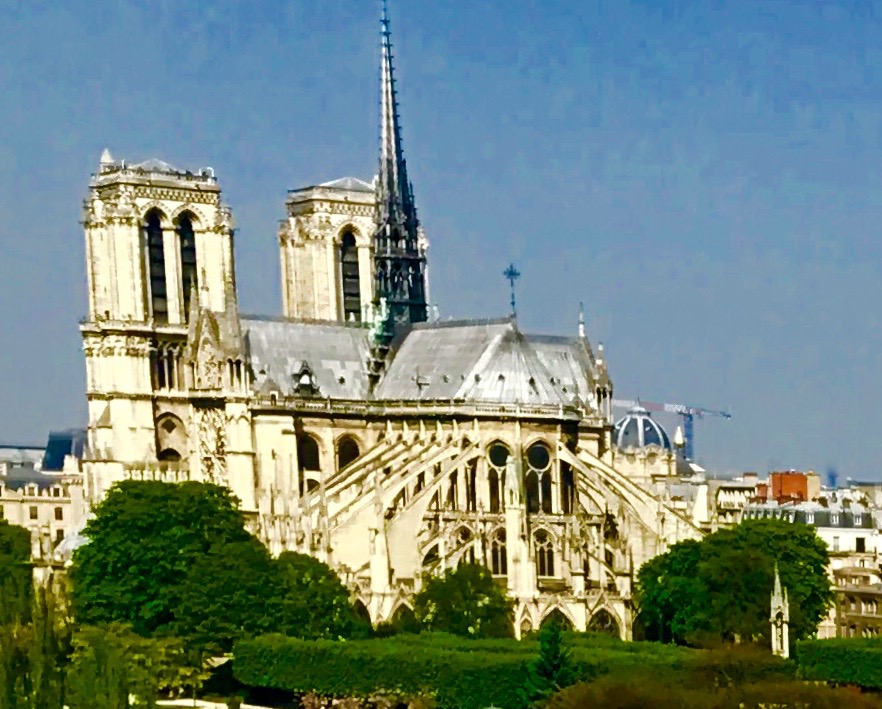
Massive flying buttresses support the Cathedral Notre-Dame. Photo by Marla Norman.
Continuing around the back of the Cathedral, we admire the massive flying buttresses. Notre-Dame was one of the first structures ever to use this type of support. Historians rate the church as one of the finest examples of French Gothic architecture.
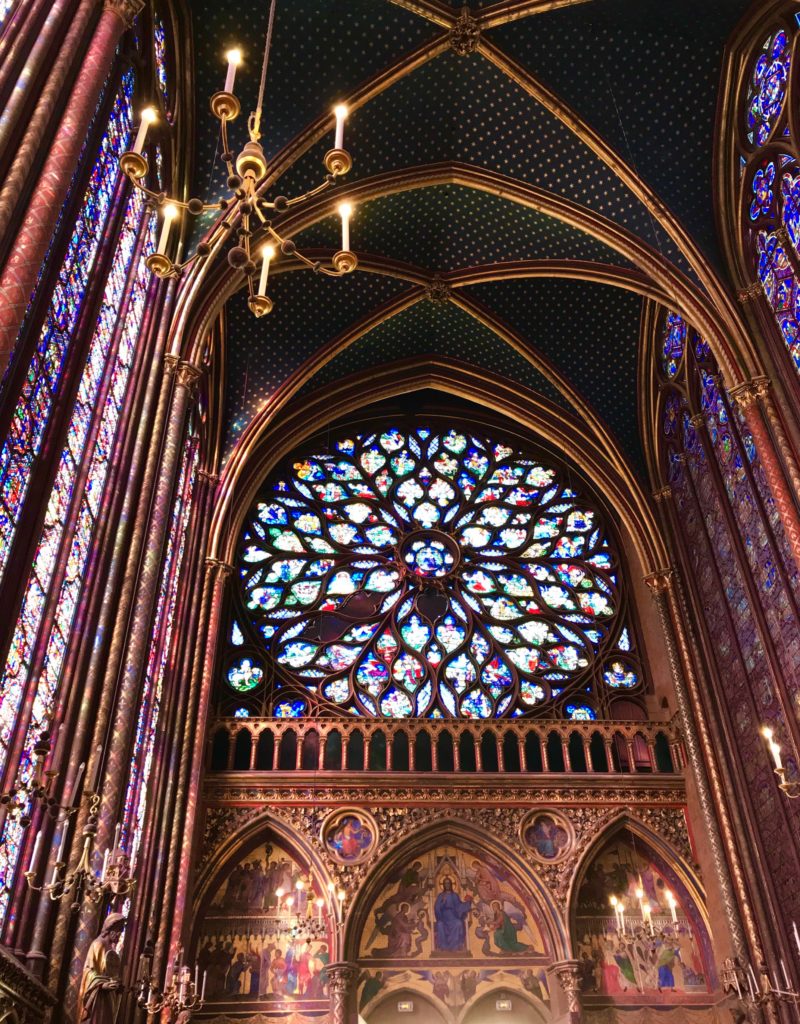
Rose Window of the Sainte-Chapelle, built by Louis IX. Photo by Marla Norman.
SAINTE-CHAPELLE
Our first glimpse of the stained glass windows in the Sainte-Chapelle is simply heart stopping. Even to a casual visitor, it’s obvious that the glass is extraordinary. Not surprisingly, art experts confirm that the windows are some of the finest in the world.
Fifteen windows, each 50 feet high, fill the entire nave and apse, while a large Rose Window sits within the western wall. The colors are dramatically intense, with deep reds and blues — shades noticeably different from Medieval designs developed later. To see the dazzling light and the 1,130 illuminated figures portrayed in the glass is an experience of a lifetime.
The small church was originally built by King Louis IX to house his collection of Passion Relics, purchased from Baldwin II, Emperor of Constantinople. These included Christ’s crown of thorns, fragments of the cross and lance, drops of Christ’s blood and 30 other items. Even in 1238, when construction of the chapel began, there were numerous skeptics who doubted the authenticity of the objects. Nonetheless, Louis paid 135,000 livres at the time or approximately $35.5 million in modern currency.
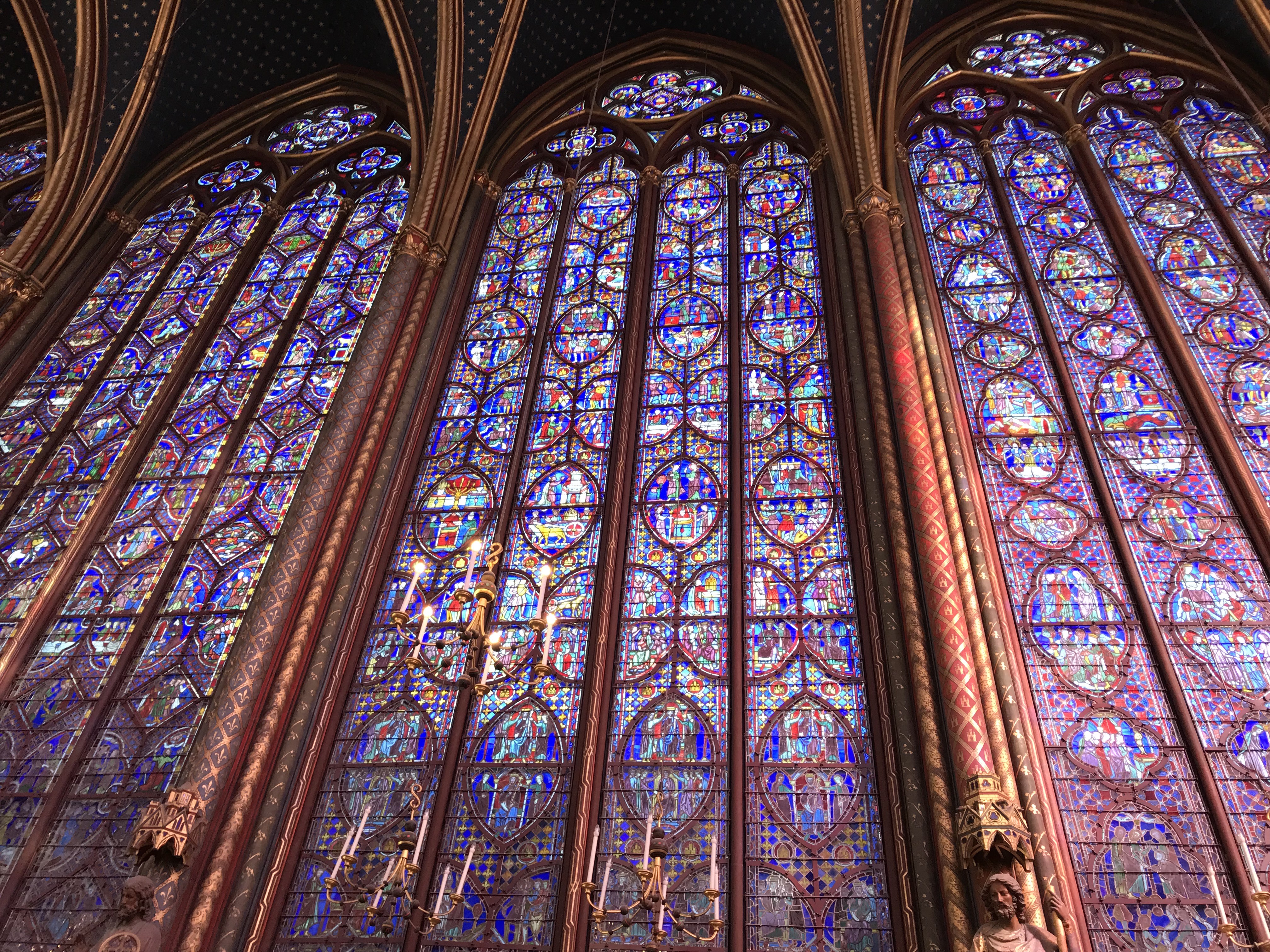
Fifteen windows, each 50 feet high, with 1,130 figures composes the entire nave of the chapel. Photo by Marla Norman.
Tragically, most of the relics were destroyed or lost during the French Revolution. The Crown of Thorns is now housed in the Treasury at Notre-Dame. Violette explains that the Crown can be viewed once a month during a special Mass. The exquisite windows, however, weren’t damaged during the Revolution. As was the case with Notre-Dame, they were miraculously spared. Interestingly, architect Jacques Félix Duban completed restoration of the chapel in 1855, assisting him was a young Viollet-le-Duc, working to establish his credentials.
During World War II, each fragile glass panel was removed and hidden, then painstakingly reinstalled after the war. The windows have since been dismantled again and cleaned with lasers, to coincide with the 800th anniversary of King Louis’ (now canonized Saint Louis) birth.
Reluctantly, we tear ourselves away from the spectacular light show to continue our exploration of Île de la Cité.
LA CONCIERGERIE
Our next stop is the impressive Conciergerie. This enormous castle sits directly on the Seine and was built in the 10th century by the early French kings. Charles V moved out of the castle, or Palais de la Cité as it was known, in 1358, for more luxurious apartments in the Louvre. The older palace continued to house the Parliament, with a Concierge, appointed by the King, to oversee his affairs — thus the name Conciergerie.
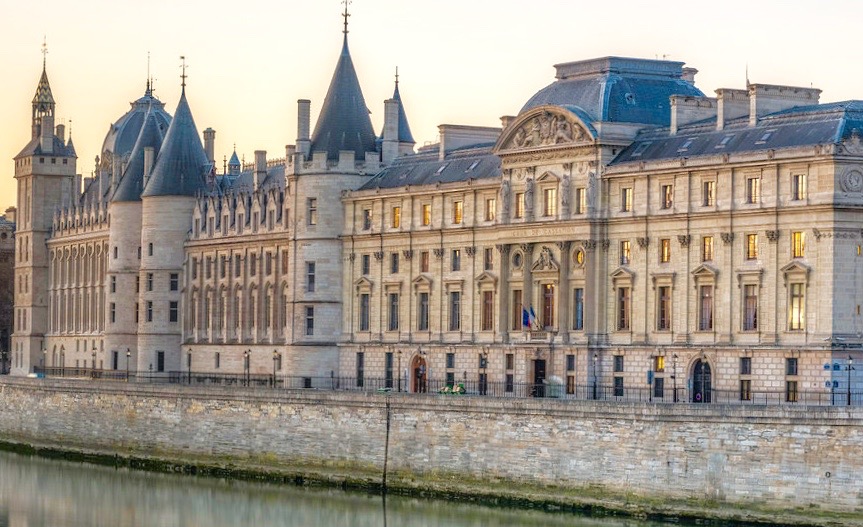
The resplendent Conciergerie housed the French kings during the 10th century, but later became one of the most notorious prisons in the country. Photo courtesy of La Conciergerie.
In 1391, a portion of the palace was converted to a prison. As was typical of the time, wealthy prisoners got their own cells with a bed and decent food, while the poor were confined to dark, filthy oubliettes or forgotten places. Walking along the dark, stone corridors, it’s easy to imagine how brutally the majority of prisoners must have suffered.
The Conciergerie became even more notorious during the French Revolution and the Reign of Terror as it’s now called. During a ten month period, from September 1793 to July 1794, over 40,000 citizens were executed. The Revolutionary Tribunal, set up in the Conciergerie, sentenced anyone considered treasonous to prison or the infamous guillotine.
Violette leads us to the prison cell of the castle’s most famous inmate, Marie Antoinette. The tiny space has now been converted to a chapel. But it remains an incredibly melancholy place. “She was probably one of the most maligned figures in history,” Violette tells us. “She suffered horribly here, for 76 days. We know now that she was very ill with ovarian cancer and in tremendous pain. Her jailers went out of their way to mistreat her.”
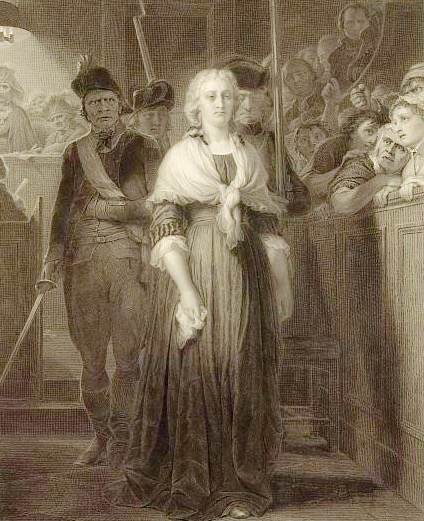
Marie Antoinette spent 76 days imprisoned at La Conciergerie. Photo courtesy of La Conciergerie.
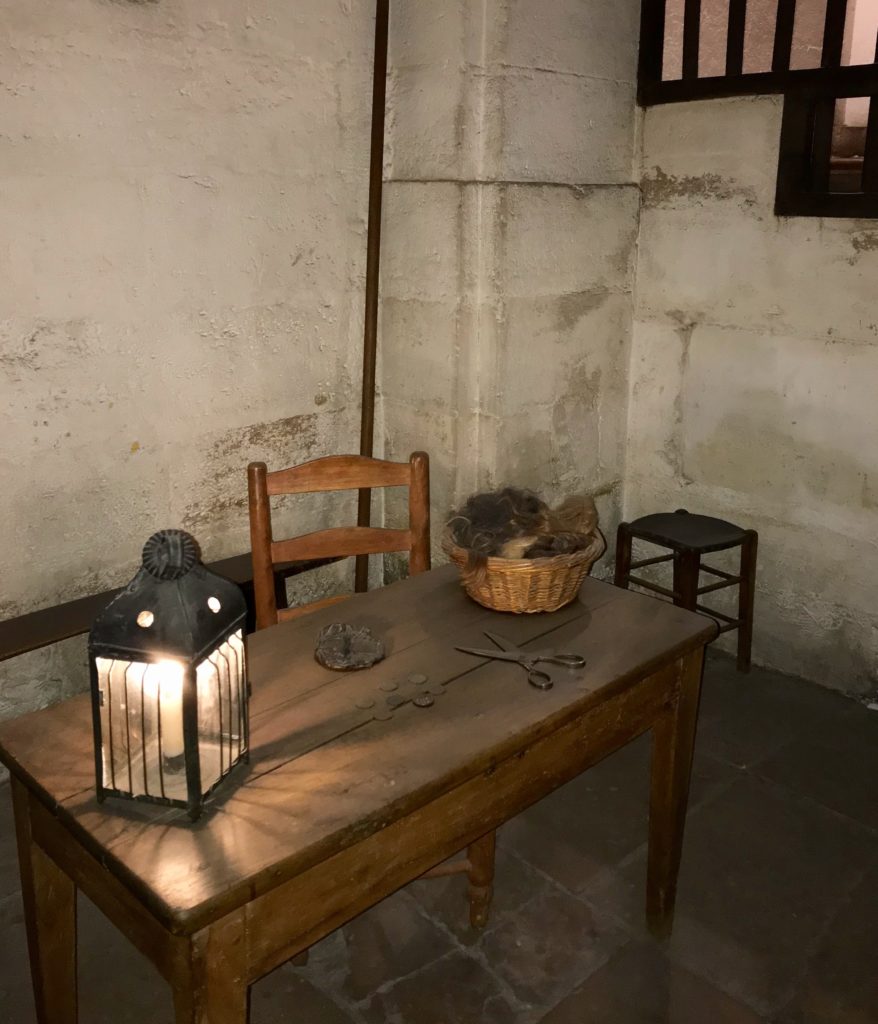
Prisoners bound for the guillotine were first sent to this tiny cell to have their hair cut off. Photo by Marla Norman.
Another historical, albeit gruesome side story: After both Marie Antoinette and Louis XVI were executed, none other than Madame Anna Marie Tussaud was summoned to make death masks of the couple. Prior to the Revolution, Madame Tussaud, made her living creating wax figures of prominent personalities. Her clients included Voltaire, Jean-Jacques Rousseau and Benjamin Franklin — all sculpted while living.
Because of her associations with celebrities and aristocrats, Madame Tussaud was perceived as a royal sympathizer. She was consequently arrested, had her head shaved and was enroute to the guillotine when the revolutionary powers decided she might be more useful alive, making masks of famous victims, which could then be paraded through the streets. Eventually, Madame Tussaud was able to escape Paris and move to London, where she opened her museum in 1802.
A dark, unimaginably difficult period in French history to say the least! Outside, in the fresh air and sun, we take a final look at the Conciergerie — incredulous that this enchanting-looking castle was also the site of so much horror and death.
LES DEUX PALAIS
At this point in our tour, we’re ready for a break. Violette directs us to a nearby brasserie, Les Deux Palais. “You need a nice lunch with a good glass of French wine,” she instructs us. We couldn’t agree more.
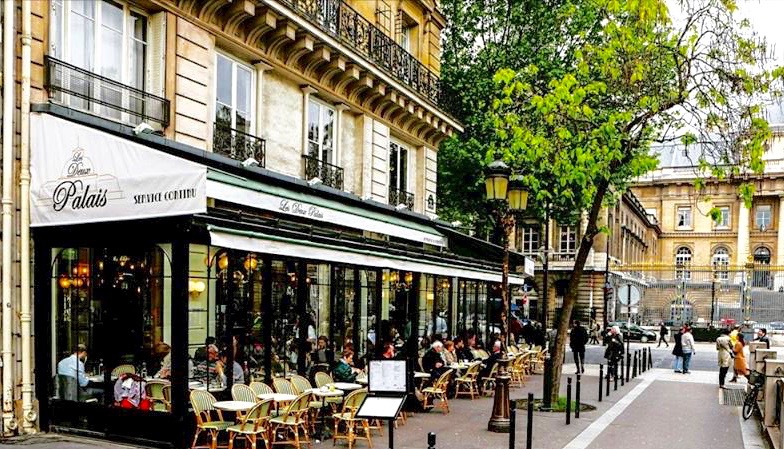
Brasserie Les Deux Palais, across from Sainte-Chapelle on Île de la Cité. Photo courtesy of Les Deux Palais.
Violette, meanwhile, goes off to check on our reservations for the Notre-Dame rooftop visit. We’re eager to finally climb the towers and meet the famous Chimera. In the past, long lines and time-consuming waits were the primary reason we never attempted to make the rooftop tour. Now, thanks to Violette and Walks of Paris, we can enjoy a break and then make the climb, without wasting precious vacation time. We were equally grateful at Sainte-Chapelle, where we skipped long lines with our Walks of Paris tickets.
At Les Deux Palais, attentive waiters, in traditional black suits and long, starchy aprons, come to take our order. The restaurant is lively and a bit noisy — the way a good brasserie should be at lunchtime. We enjoy watching the crowds as much as we do the traditional menu: Soupe à l’Oignon Gratinée Maison, Croque Monsieur, Steak Haché and best of all Assiette de Frites — any meal is better with fries. A couple of glasses of Sancerre later, we’re refreshed and ready to go.
CHIMERA, GARGOYLES & PARIS AT OUR FEET!
Back at Notre-Dame, Violette is waiting. “Ready for the 422 steps up the tower?” she asks. Then shakes her head vigorously and laughs when we ask if she’s accompanying us. “Oh No!!! I’ve been many times. You’ll be fine on your own.” We wish her the best, make plans for other tours, then start up the narrow stairs at the bottom of the tower.
The first hundred steps aren’t too painful; after 200 hundred, our calves begin to burn and we’re panting. Fortunately, at this point we reach a large balcony and are able to rest. Le Stryge, the best-known Chimera is waiting to greet us. He has his head cupped in his hands as he gazes somberly out at the city. Imagine all he’s viewed the past hundred-plus years! A flippant tongue sticking out of his mouth is all the response we get.
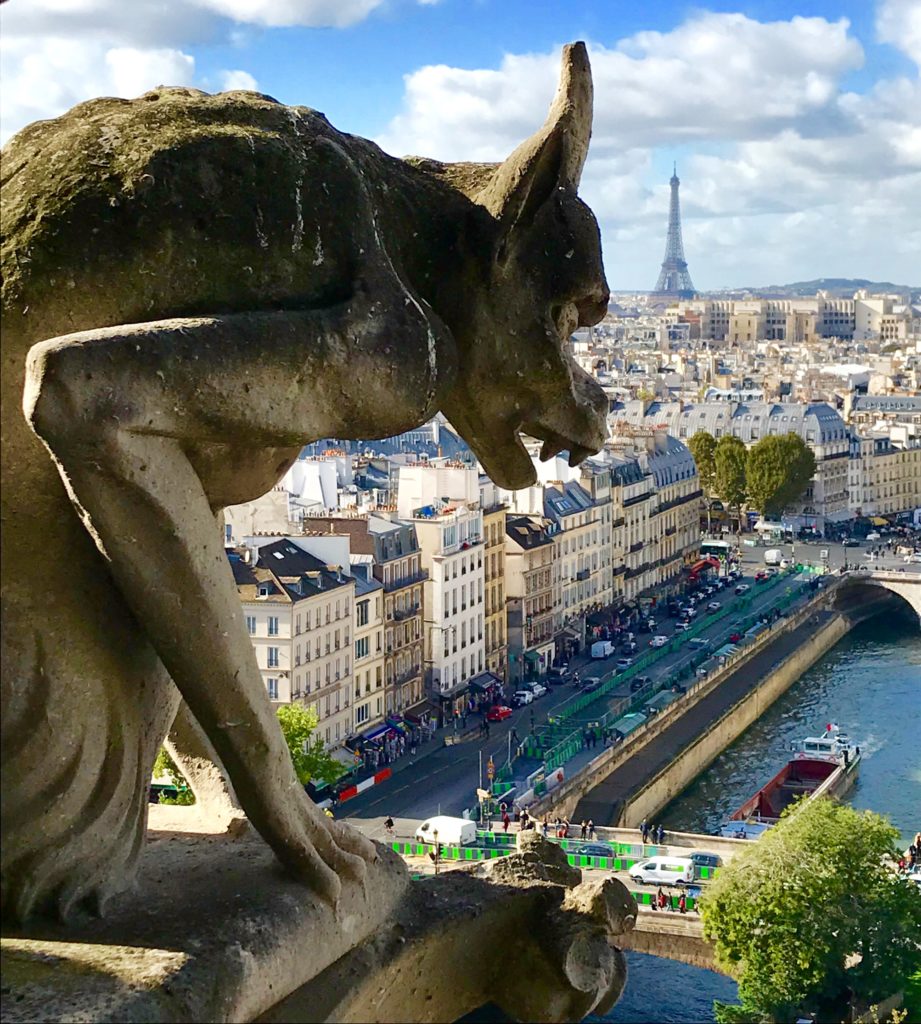
A Wyvern perches on a high ledge over the Seine. Photos by Marla Norman.
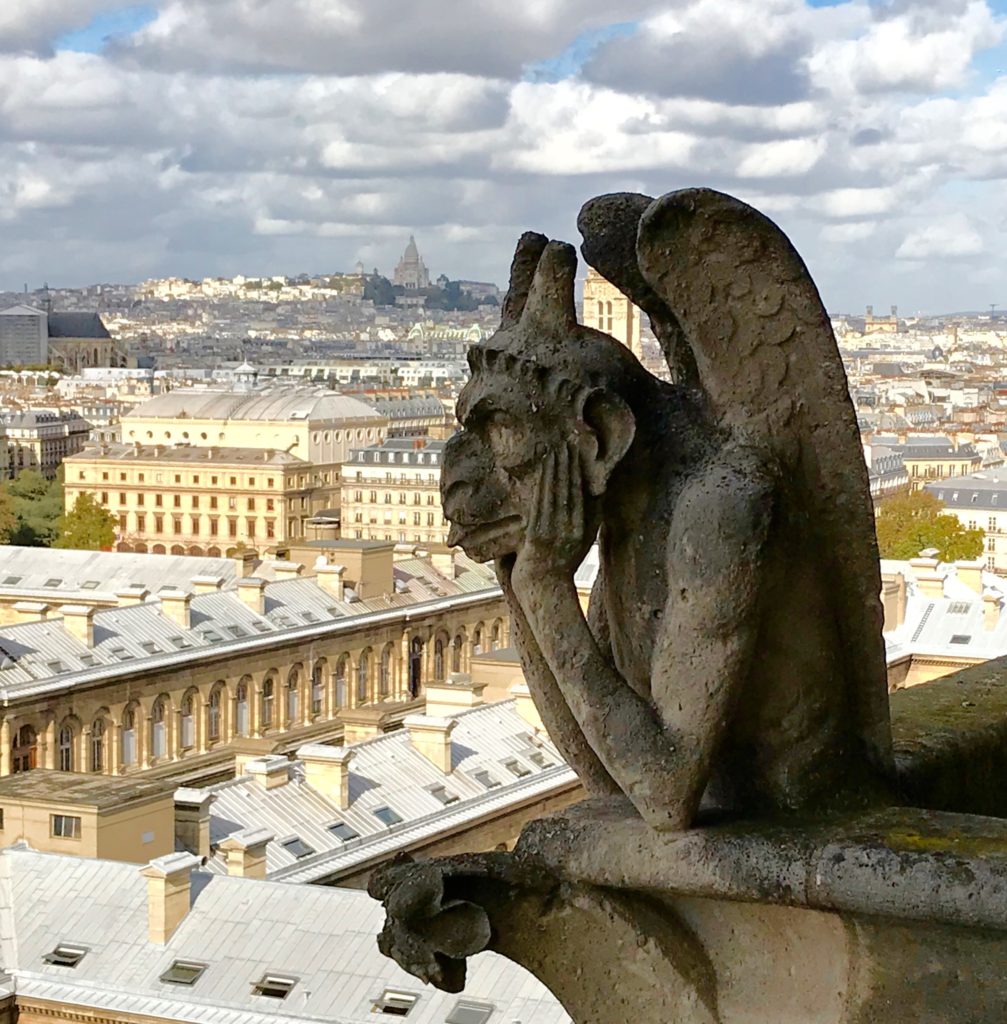
Le Stryge, the most famous of the Notre-Dame Chimera, with the Montmartre Sacré-Cœur Basilica in the background.
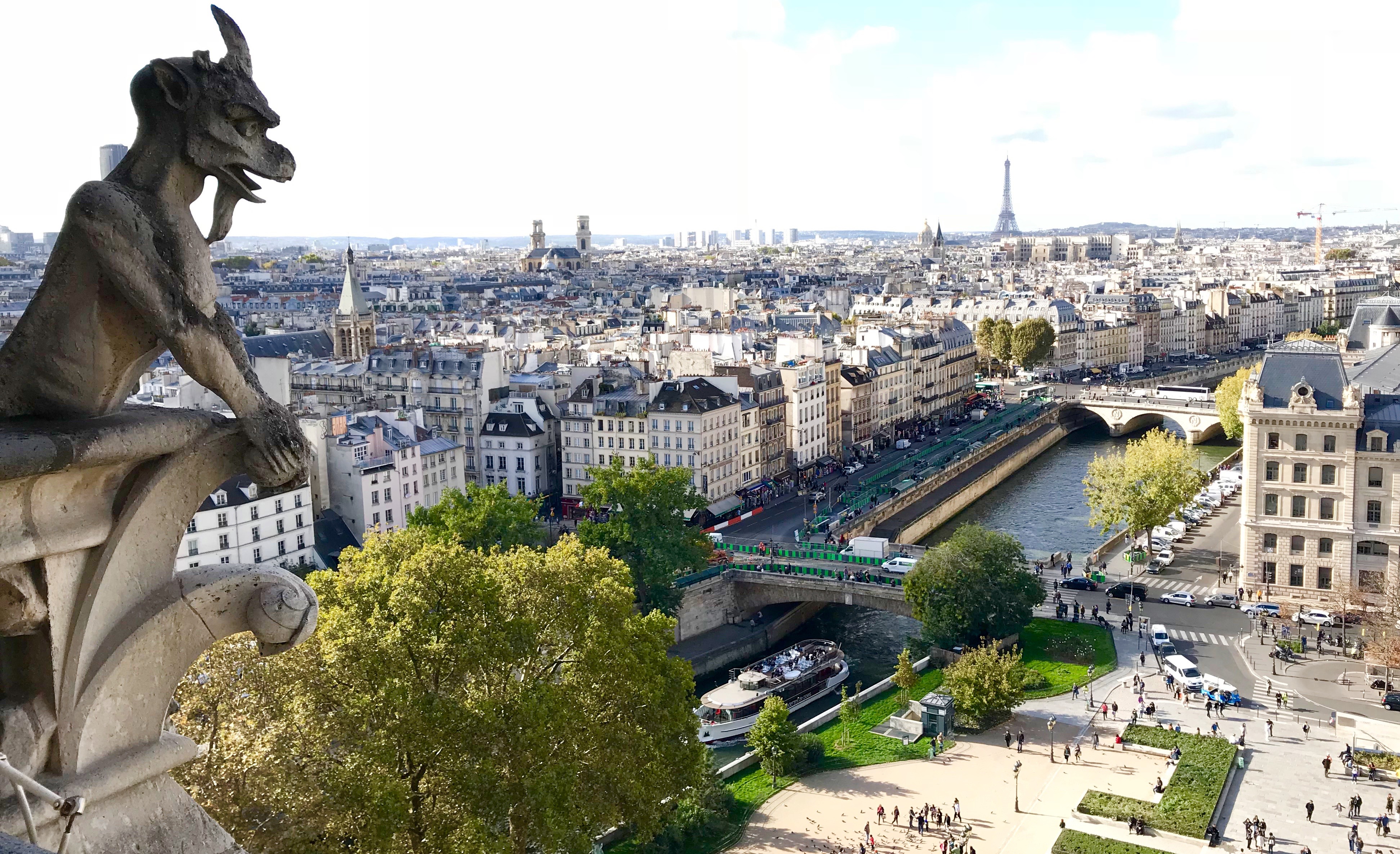
More Notre-Dame critters and a spectacular view of Paris and the Eiffel Tower. Photo by Marla Norman.
Stryge is just one of the many creatures among the “guardians” created by architect Violet-le-Duc when he restored Notre-Dame. He clearly enjoyed the personable monsters, since they are on watch at every corner and roof line, sculpted in fantastic detail.
Also impressive are the Gargoyles, carved drain spouts useful to protect the masonry from water damage. These fantastical creatures pre-date Violet-le-Duc, having adorned the Cathedral for more than 600 years.
But intriguing as the monsters are, the heavenly views of Paris are what really make the climb worthwhile. The city stretches out before us like a long, endless postcard. The Eiffel Tower, River Seine, Sacré-Cœur on Montmartre, Arc de Triomphe — all the iconic Paris monuments are spectacularly on view.
We also visit the tower bells. Emmanuel, is the name lovingly bestowed on the largest and oldest bell in the Cathedral, dating back to 1681. Prior to the Revolution, there were ten bells. Only Emmanuel survived the pillaging.
Four new bells were installed in 1856, but they were noticeably not in tune with Emmanuel. Finally, in 2012, a set of nine new bells were cast, including a much larger bell called Marie, now with Emmanuel in the south tower.

Marla Norman & Michel Thibault celebrate after climbing 422 steps to the top of Notre-Dame.
Climbing down from the tower, we’re exhausted and exhilarated at the same time. The Notre-Dame rooftop tour is the Grand Finale to an unforgettable day — encounters with the ghosts of the Conciergerie, an incredible light show at Sainte-Chapelle and the mythical, otherworldly spirits of Notre-Dame.
Une autre belle journée sur l’Île de la Cité!
